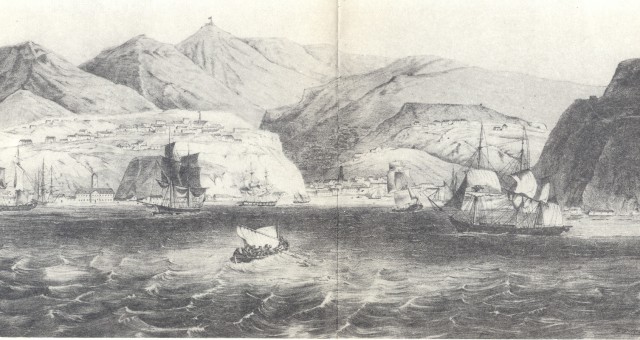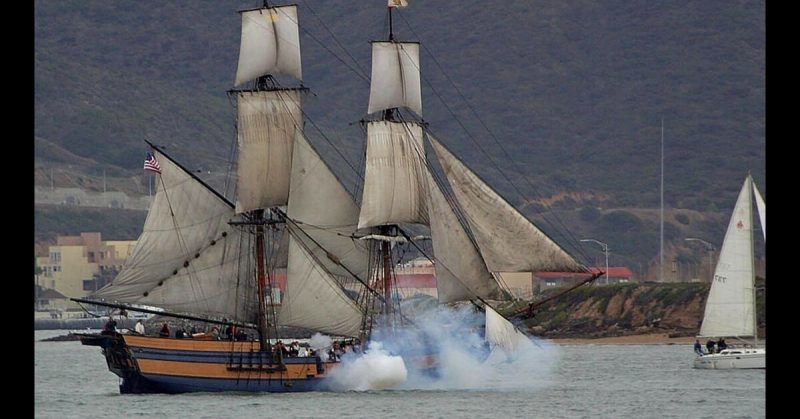It is rare for Hollywood movies to be historically accurate and many people know that making a movie out of a book is usually disappointing, especially to fans of the books. Well, Master and Commander: The Far Side of the World goes in the opposite direction, and is one of the most historically accurate movies of this century, as well as doing justice to a much-loved series of novels by Patrick O’Brian.
Set in 1805 during the Napoleonic Wars, Far Side of the World has Captain Jack chasing down the larger French Privateer, Acheron with his smaller corvette/frigate ship, the Surprise in an attempt to keep the French out of the Pacific.
The movie combines aspects from around a dozen different O’Brian novels and often pulls direct quotes and scenes.
The Good
For Historical accuracy, it is nearly the whole movie that just gets it right. O’Brian was an absolute stickler for historical accuracy in his novels, and the producers went to amazing lengths to ensure accuracy. Starting with the ship the Surprise; It was very well represented in the film, matching schematics quite closely and the real HMS Surprise gained fame for capturing privateers as well as winning a tightly contested boarding action to reclaim a mutinied HMS Hermione.

Most casual observers might think it odd that kids were on the ship, and, even more, strange that they had commanding roles and fought in engagements, but this was absolutely spot on in the movie. Naval command was a difficult field to advance in and it could take years just to learn the ins and outs of a single ship. Aristocratic children were often sent to serve on a ship at a young age to get a head start towards command, and they were well educated enough to handle responsibility above their age.
As we see in the movie, a couple of boys stood out above the rest as being brave, smart and talented leaders while other scenes show the rest of the kids learning the basics.
Another interesting aspect in the movie was the relative calm and civil dialogue even in harrowing combat scenes, the “Mr. Harland/ if you please” seems unrealistic in such situations but it was very common aboard warships of the time. The civility was drilled into the men and sticking to it during battle helped cooler heads prevail during periods where orders, and plans had to be efficiently executed.
This calmness under pressure is most often seen in pilots today where an impending crash and death is often handled with chilling calm as it allows the pilot to focus and attempt to fix or make the best out of a situation.
Additionally, many small details were excellently done, especially the mess and sounds of battle. Microphones were placed at the base of period-accurate cannons as well as a hundred or more yards out as all of the various shot, from chain to grapeshot, was fired.
When battle scenes are occurring in the film you hear actual cannon and musket shot and their real impacts on wood. There is so very much historically right with this movie that it is hard to believe that it is a big budget Hollywood film.
The Bad
Though not a bad moviemaking choice in any way, it should be noted for historical accuracy that the characters shown are fictional. The movie takes place in a real war, with a British ship that actually existed at some point, but the majority of the plot and characters are adapted from the fiction of O’Brian. Saying that, the plot and characters are exceptionally well done.
In O’Brian’s novel that sets most of the plot for the film, the setting is the War of 1812 between the British and the Americans and it is an American vessel, not the French one that the Surprise is chasing. This was changed to make the movie more presentable to American audiences, going back to 1805 and the Napoleonic War, but this change left behind a few inaccuracies.
The discussion of Lord Nelson occurs a few times in the book. When young William Blakely is present with what is an ultimately real biography of Nelson, he gets it roughly a year before it was published. Captain Jack also recounts serving with Lord Nelson in the Nile as a teenager, or in his early twenties, but the engagement discussed happen just six years before the movie.
Though this is a matter of opinion, the very first battle seems unrealistic, as the Acheron had such a decisive advantage that it is hard to imagine how the Surprise possibly escaped. Taking two broadsides while their own could scarcely penetrate the thick oak of the Acheron the crew decimated and the rudder shot it seems that the Acheron should have been able to maintain close contact, fire more broadsides, perhaps chain and grapeshot and been able to board.
The movie shows all sorts of calamities from masts breaking to the ship taking on water and from that time to getting rowboats manned and pulling, the Acheron is simply out of the picture.
The Ugly
As mentioned above, there really is not much to complain about regarding the historical accuracy, it is a shining example of how Hollywood can make a great movie while staying as close to history as possible. Despite every effort, there is one glaring oversight.

At the very end of the film, the captured Acheron is sent to the Spanish colonial port of Valparaíso in Chile. Not only was Valparaíso farther away than other acceptable ports, it was also still very underdeveloped by 1805. Its real growth into a port city didn’t start until about a decade later.
On top of this Valparaíso was Spanish and therefore allied with France and Napoleon, something Jack would have known. Sending the captured ship, there would be as good as giving it back to the French.
